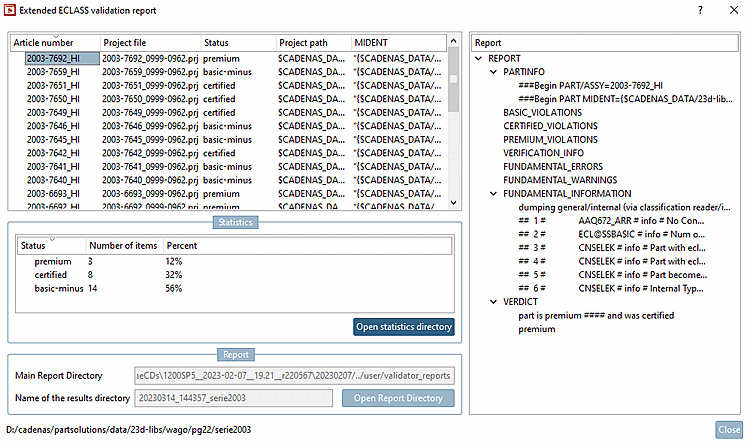The Excel presentation is based on the CSV files.
The list on the right (
ViolationsDescriptions.csv) shows a breakdown according to the basic, certified and premium fault groups. Each group shows what is missing to achieve the respective certification level.For each error code, the number of counts is displayed.
When opening the single sections the affected article numbers are visible.
The bar chart (
status.csv) shows the number of products in the respective status (displayed as a pivot).The pie chart (
class.csv) shows the ECLASS class distribution across all products contained in the log (displayed as a pivot).
In the Excel sheets "classe", "status" and "ViolationsDescriptions", you can see the table data which is used for the representation.
In the user directory under "validator_reports", you can find all reports created during the generation. Each report includes the following directories and files:
The DETAILS directory contains text files with the specific error codes that have occurred. Each individual text file lists the items that have the respective error.
XMLREPORTS: All reports in the form of xml files (generated by the batch verification tool "ECADPS3VERIFY") are listed here. If you open a file in any xml editor, you will see the information displayed in the Extended ECLASS Validation Report [Extended ECLASS validation report] dialog in the Report dialog area.
Explanations of the individual XML sections:
All sections ending with INFO, WARNINGS or INFORMATION have no influence on the final verification status of the part. These entries essentially contain information that can be useful in the modeling process.
The FUNDAMENTAL_ERRORS section contains entries that indicate violations of the ECAD data model; such parts are automatically not certified.
CNSELEK # Info # part with eclass number: ECLASS Class
Cf. https://eclass. eu/eclass-standard/content-suche/search
VIOLATIONS: Error classes and error codes
There are three types of VIOLATIONS:
The PREMIUM_VIOLATIONS section contains all entries that prevent the part from reaching premium status.
The CERTIFIED_VIOLATIONS section contains all entries that prevent the part from achieving certified status.
The BASIC_VIOLATIONS section contains all entries that indicate serious errors in the modeling; with such parts, successful export to various ECAD systems is generally not guaranteed.
checkReport.csv: Contains information about the status and article numbers requested by the modeler to solve the problem.
The information from
classe.csv,status.csvandViolationsDescriptions.csvis displayed in Excel. See above.


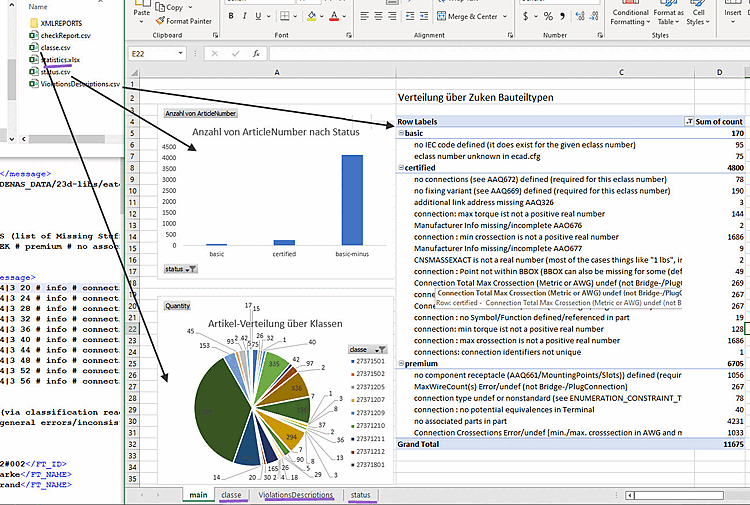
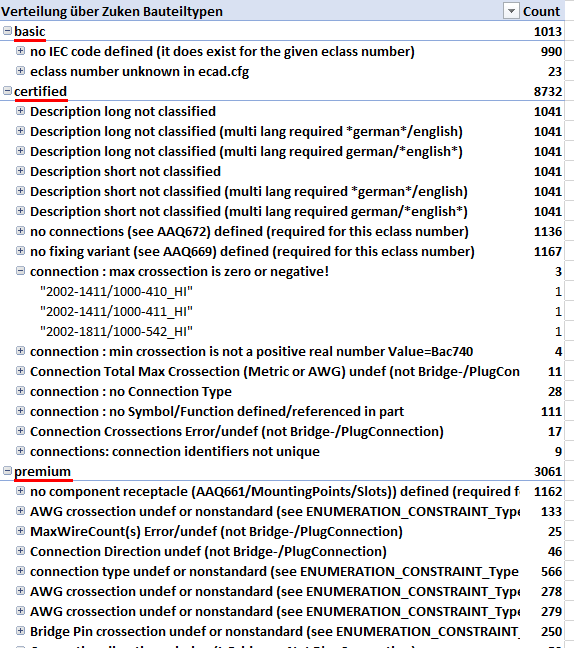
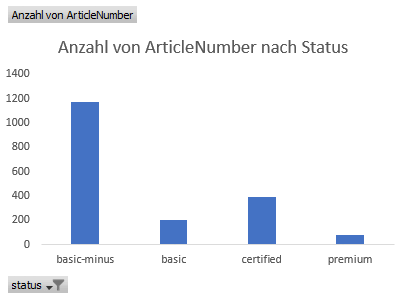
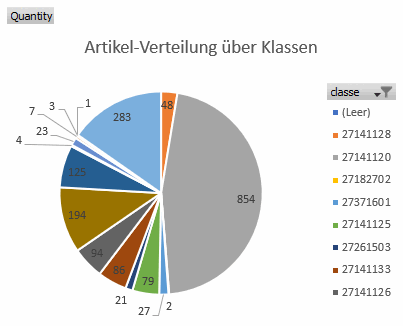
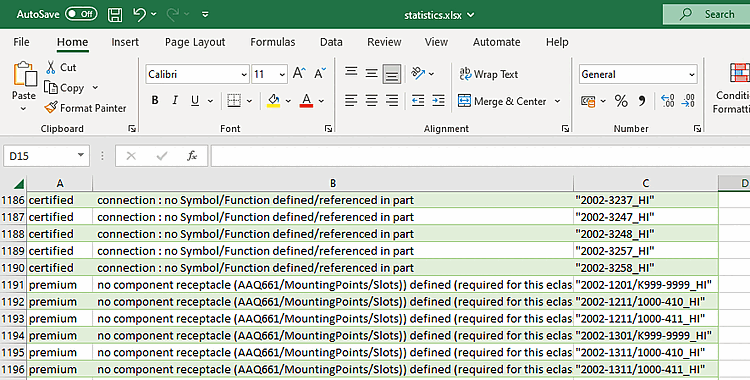

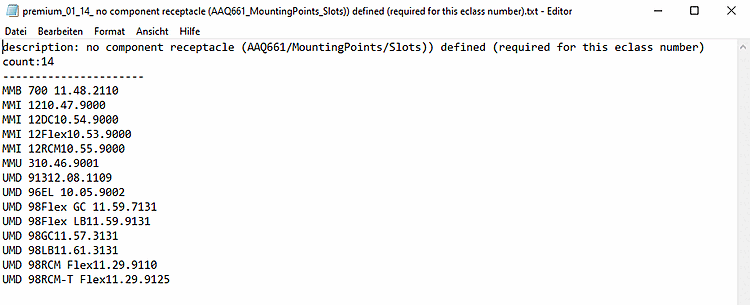
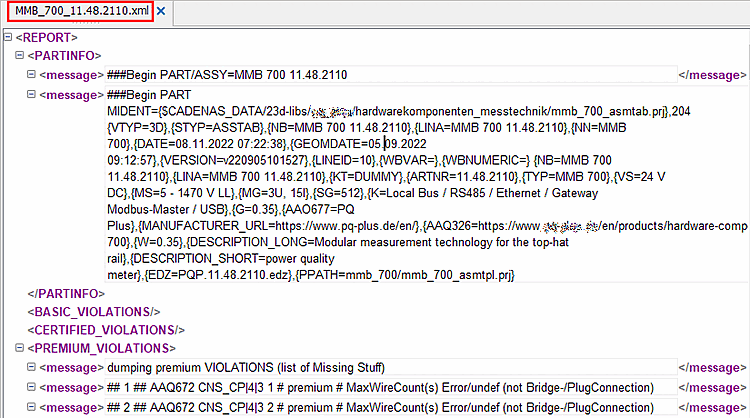


![[Note]](https://webapi.partcommunity.com/service/help/latest/pages/jp/ecatalogsolutions/doc/images/note.png)


